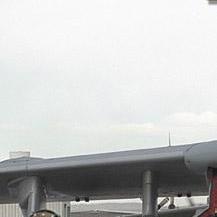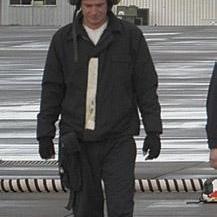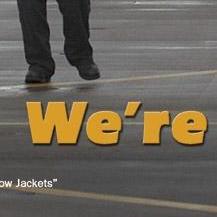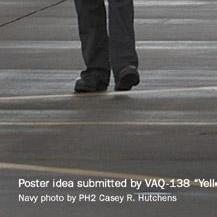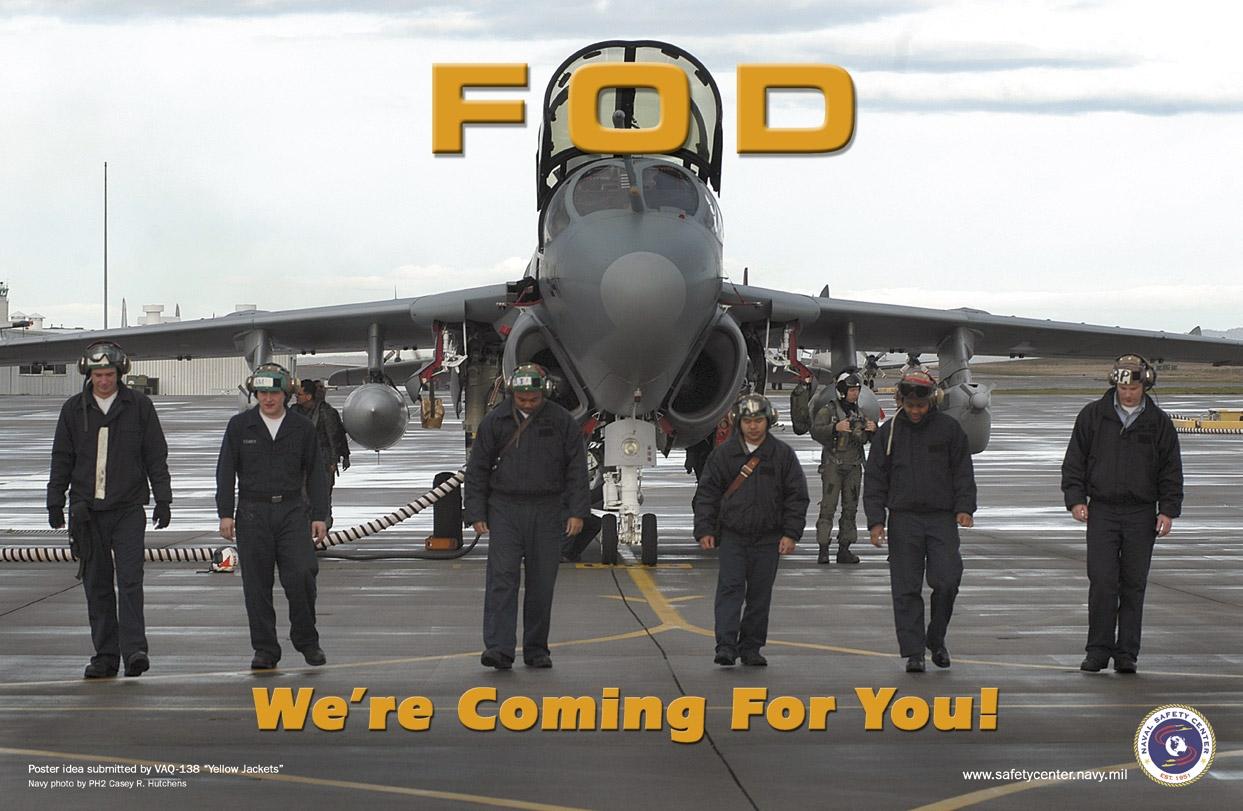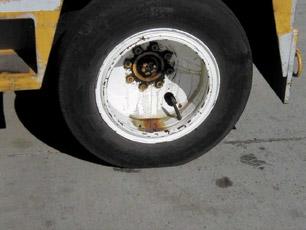
6 minute read
Good, Bad and Ugly
The Naval Safety Center and Commander, Naval Installations have teamed up and have bought banners like this one. Getting out the safe-drive message is critical to improve safety awareness.

Advertisement
‘Nuff said!

Leaking fl uids indicate a potential problem. Check equipment for security and operation in accordance with the manuals and checklists.


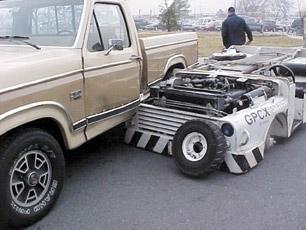
Mech Celebrates 45 Years of Service to the Fleet
In 1961, maintenance mishaps were a big problem. This first issue didn’t have stories, just 64 pages of stats, analysis, and maintenance-related mishaps of all classes. It’s purpose was to help reduce mishaps. In the 1970s, the look and content of the magazine changed. It now included first-hand accounts of things gone wrong. These “there I was” stories taught lessons about mistakes and how to prevent mishaps. In the 1980s, the focus was on the maintainer. The magazine included a section called, “Bravo Zulu” to recognize Sailors and Marines who had done good deeds, prevented mishaps, and saved lives.
Celebrates 45 Years of Service to the Fleet
In the 1990s Mech shared the beginnings of efforts to work on human factors and risk management. It included stories on new equipment and programs that make a maintainer’s job easier, better, safer, or cleaner. In the new millennium, the magazine has provided information on best practices and innovative ideas to improve existing safety programs, while still focusing on first-person stories about mishaps and near-misses.
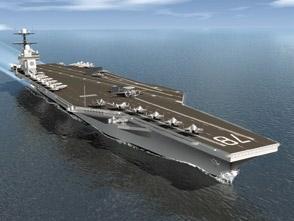
The future is an open door. What challenges will new aircraft, ships technology, and the transformation of naval aviation and maintenance bring? Mech will continue to provide information by maintainers and for maintainers.
We were doing night ops aboard USS CarlVinson, and our squadron was preparing for a six-month deployment to the Middle East. We were finishing up a three-week work-up period when our squadron got a tasking order to be the alert aircraft for the night exercises. While prepping the aircraft for alert-five status, an incident occurred that changed my life forever.
It was 2030, and I was on the flight deck of the ship. We were working hard, and everything seemed to be tracking well during fast-paced and chaotic night operations. The ship called to launch our Alert-5 aircraft. As the yellowshirts rushed to get our jets to the catapult, I realized one of our birds still needed a final check.
The yellowshirt began to taxi my jet forward, leaving enough room for a final inspection of the tailhook. The aircraft handler yelled, reminding me that it needed to be inspected before the launch—as if I didn’t know.
As I crawled under the aircraft, I saw the hook begin to raise. I quickly signaled the yellowshirt to drop it again. As I rushed to get back under the jet, I lost my balance, and the worst thing happened: The yellowshirt never signaled to re-drop the hook, so it continued to come up. Unable to stop my momentum, I grabbed the hook. My hand came up with the hook, and my ring finger was compressed between the stop pad and the shaft.
By LCpl. Brandon Fitzhugh

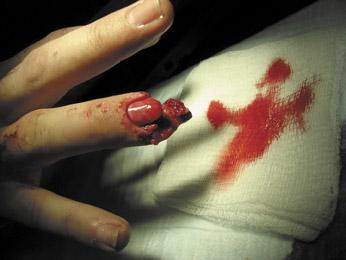

I yelled and tried to signal for help, but no one noticed my situation. The yellowshirt then began to taxi the aircraft with me still attached! In fear of being dragged across the flight deck, I quickly pulled myself free. However, that action resulted in the amputation of the last inch of my left ring finger.
A fellow Marine quickly rushed me to medical, and I subsequently was flown to Balboa Naval Medical Center. The next morning, I went into surgery where I received 22 stitches, an aluminum foil splint inside my finger, and a screw to re-attach the bone.
Written maintenance procedures are in place for a reason. No matter how many times you’ve done a job before or how rushed you are, the only way to be 100 percent sure a job is done right is to do it by the book. I learned this truth the hard way, while doing what I thought was just routine maintenance.
I was doing inspection turns on a P-3C Orion aircraft when the No. 4 propeller was found out of limits. Initial adjustments were in work when a bolt was found wedged between the propeller pump housing and the reduction gearbox (RGB). The bolt had worn an out-of-limits groove in the gearbox, requiring a pump housing and RGB change.
Although anxious to get started, my crew had to wait almost an entire shift while airframers replaced an anchor nut on a fire-warning element. By the time we were able to get to work, we only had three hours left in the shift. Even though the No. 4 engine and propeller are major components, they don’t take long to install.
As the mid-check supervisor, I was convinced we had adequate time to replace both, and we did. The entire process went so smoothly that we even had enough time to do a good clean up and provide a detailed passdown to our day-check relief. I thought it was a job well done.
As a result of this incident, I learned two key lessons. First, communication always is a key function when operating in a crew environment. Without visual or verbal cues, chaos, complacency, and assumptions will occur. Lastly, never touch any moving parts of an aircraft, unless everyone knows you’re doing it. I learned the hard way and now have a constant reminder of how a couple simple steps could have prevented a personal nightmare.
By AD2(AW) Nicholas Rafanello
LCpl. Fitzhugh works as a troubleshooter at VMFA-323.





Feeling good about the work we had done, I headed home. It wasn’t long before I received a phone call from my leading petty officer (LPO) with some unwelcomed news. While doing his final inspection of our turn-in engine, which was slated to go to the Aviation Intermediate Maintenance Depot later that day, he found the propeller-shaft brass ring still was installed. This important item should have been removed from the old engine and placed on the new one during installation. If that engine had been started without the ring, the results could have been catastrophic. My LPO explained he would do some more research and get back to me later in the day. As expected, I received a call telling me the problem had been resolved, and I also found out my CDI qualification had been suspended. Considering what the results could have been, I was relieved to hear the problem was discovered before it was too late.
This experience re-emphasized the importance of by-the-book maintenance and never permitting a perceived deadline, even a self-imposed one, to influence the accuracy of your efforts.
Petty Officer Rafanello works in the powerplants shop at VP-26.

